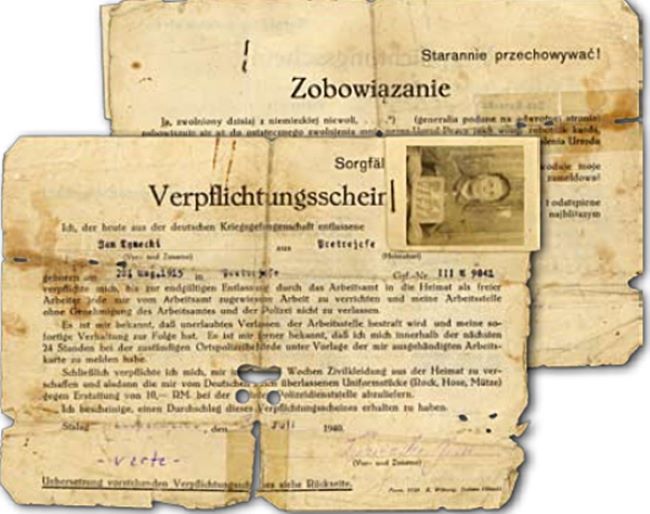“release form”. This document has been linked with the action undertaken by the German authorities when releasing POWs, Privates in stalags and noncommissioned officers for civilian work. This document was formally introduced in May 1940 by decree of Hitler and lasted until the end of that year. Each released POW had to sign a document stating that, after leaving Stalag, he would remain in the Reich until the end of the war, and make himself available to the Labor Office. This was in theory a voluntary declaration, but in practice, it became compulsory. The German authorities tried to lure the prisoners to meet the obligations by promising higher wages, better food, holidays and the possibility to receive visitors.

If the POW’s resisted to sign this form, they were subjected to physical violence. Signing this document meant to comply with the terms proposed by the German. This implied the loss of the POWs rights i.e. they would no longer receive basic care from the Red Cross, nor aid in the form of packages, etc. However, the POWs refused to do it for patriotic reasons. The procedure of the German government by obliging POWs to register in the Arbeitsamt was against the Geneva Convention of 1929 which the Reich ratified in 1934. This procedure was a major support for the economy which was suffering from labor shortage. In addition, with this procedure the Reich also made it easier for their police, administrative control, and the Wehrmacht to manage the POW camps.